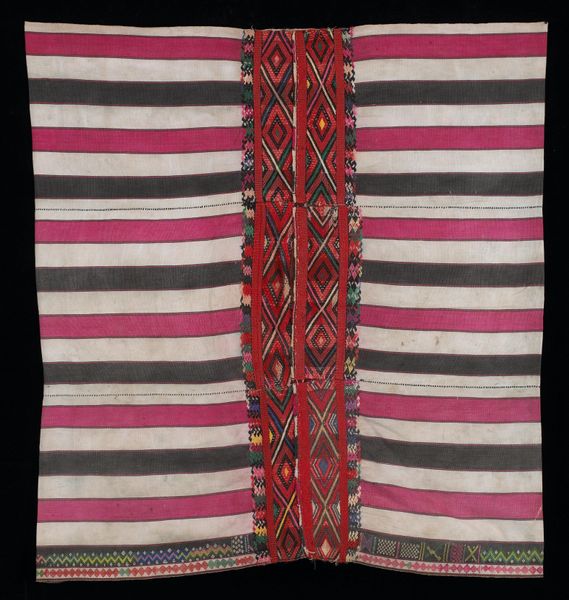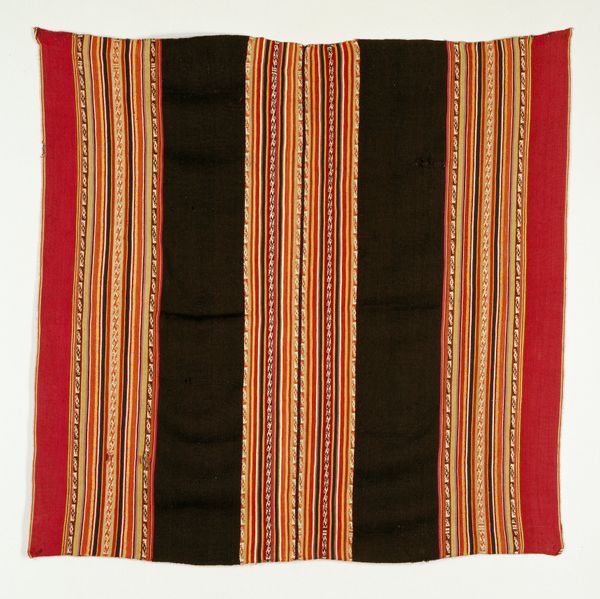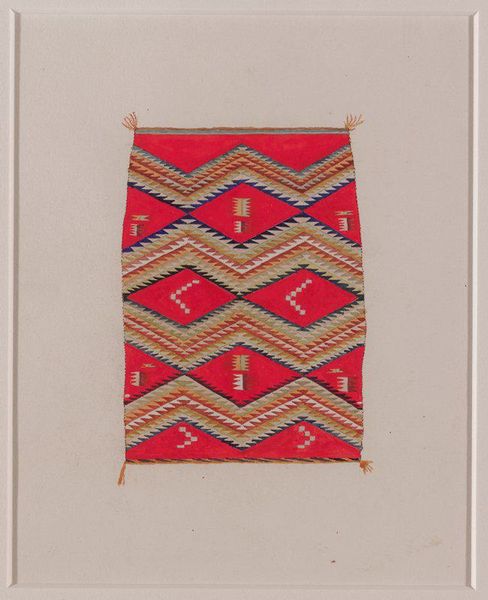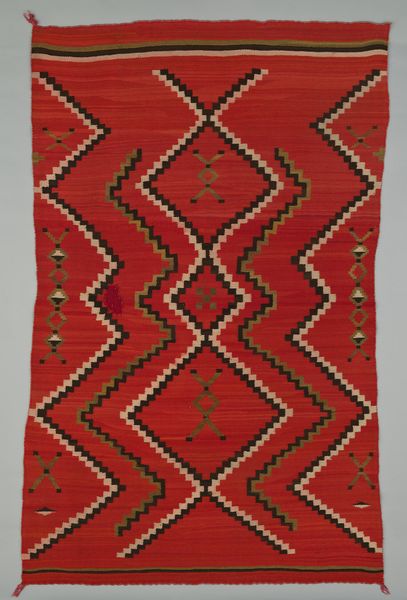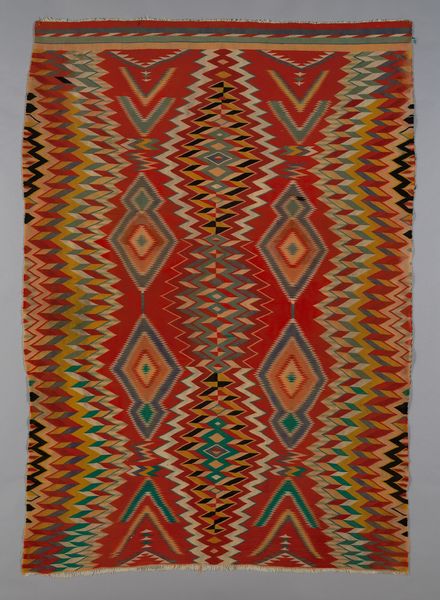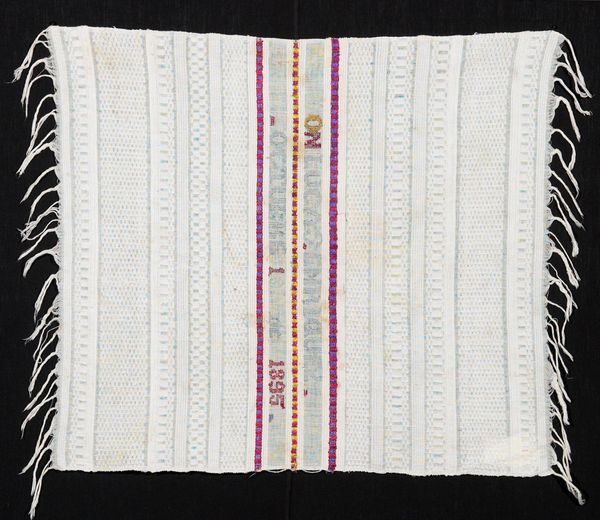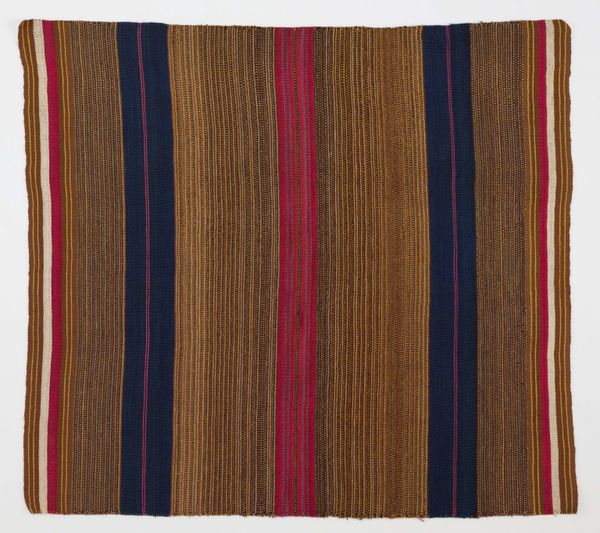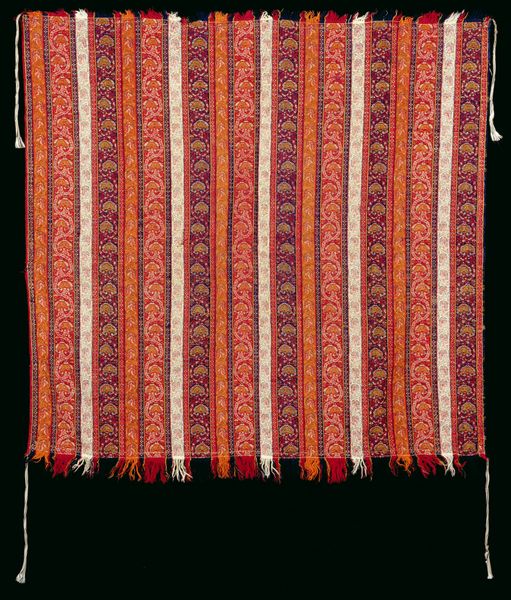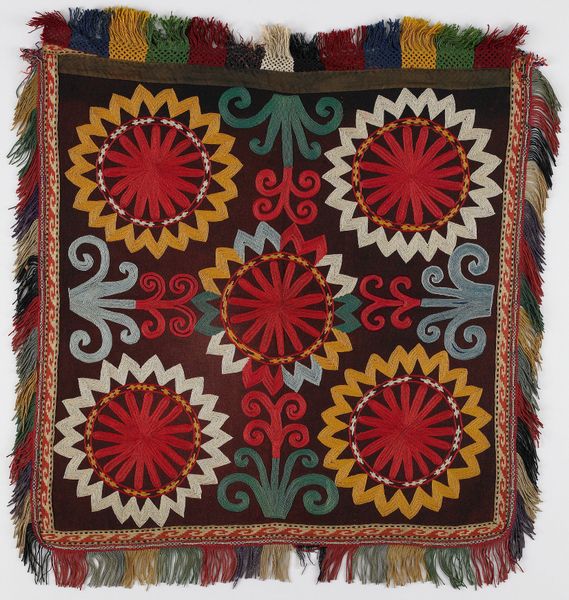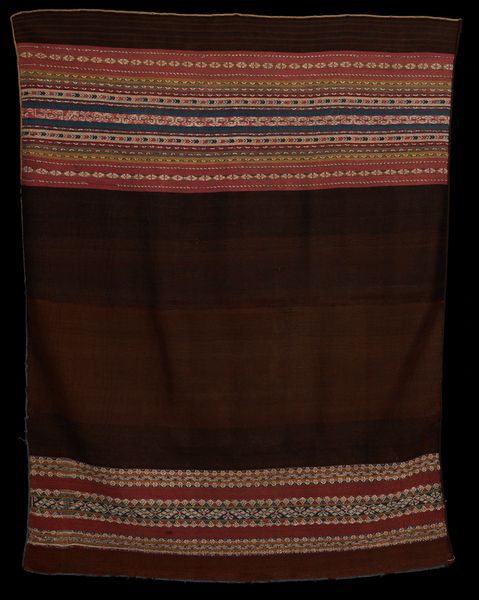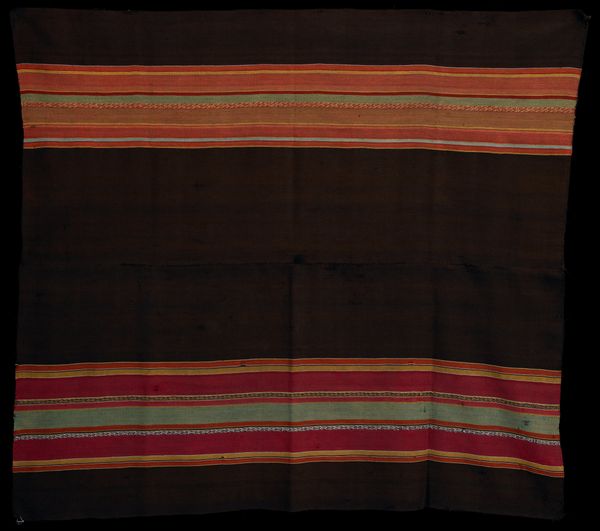
weaving, textile
#
weaving
#
textile
#
geometric
Dimensions: 44 x 46 1/8 in. (111.76 x 117.16 cm) (without tassels)
Copyright: Public Domain
Curator: The textile before us, known as "Head scarf," dates back to the early 20th century. The artist, unfortunately, remains anonymous. Editor: The colours immediately strike me—warm, faded, yet vibrant. It has the kind of aesthetic patina only time and wear can create, and there's something immediately domestic about the patterns and the feel of the material. Curator: Indeed. These textiles, especially those worn as head coverings, often carry powerful significance for women, serving as potent symbols of identity and resistance within shifting cultural and political landscapes. How might such a garment complicate our understanding of power structures during the early 20th century? Editor: Well, look closely. You'll see how it's constructed. It's woven, clearly, with warp and weft threads creating these distinctive stripes, and what look like maybe silk or rayon tassels at each corner. Notice too the imperfections – slight variations in the dye, suggesting small-batch production and manual techniques rather than industrial output. Someone created this and wore it for everyday, not special, purposes. Curator: Exactly. It asks us to question not just *who* might have worn it but also under what socio-economic conditions it was produced and consumed, raising questions of gender, class, and the global exchange of resources that powered textile industries at the time. How did the materials used shape the lives of those who created them and those who consumed them? Editor: It's this idea of labour and intention that really gets to the essence of the piece. Each thread, each choice of colour, even the slight irregularities in the weave are testament to a hand and mind working with whatever material means were accessible at the time, adding dimension and humanity. Curator: Agreed. The scarf challenges our art-historical narratives about authorship, intentionality, and reception. It brings the voices of women—particularly those often silenced or marginalised by historical accounts. It encourages us to consider their own perspectives and artistic sensibilities in this complex narrative. Editor: For me, examining this "Head Scarf" becomes less about some artistic grand statement and more about the material act of creating something useful and the socio-economic factors that made it what it is. This piece helps us ground our view in production. Curator: Ultimately, appreciating this piece means looking at the diverse stories woven into every thread. Editor: Agreed, to fully see an object is to know and respect the sum of its making, its intended functionality, and its subsequent social role.
Comments
No comments
Be the first to comment and join the conversation on the ultimate creative platform.
